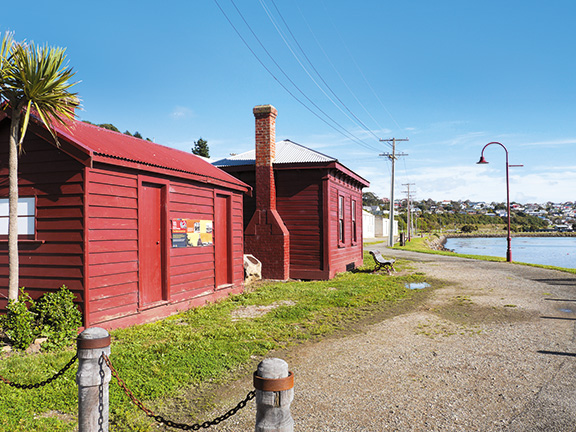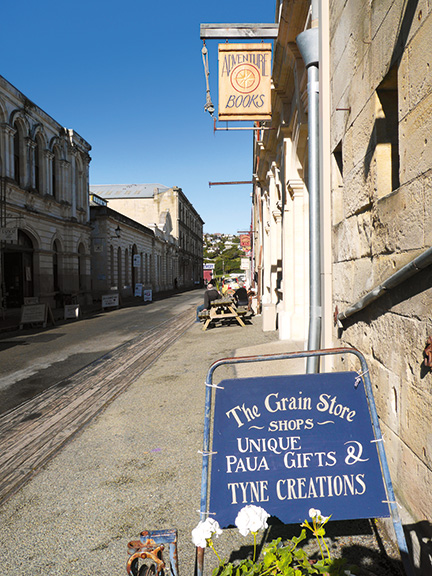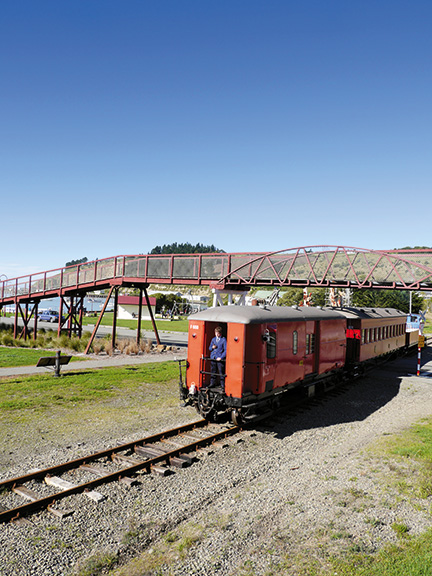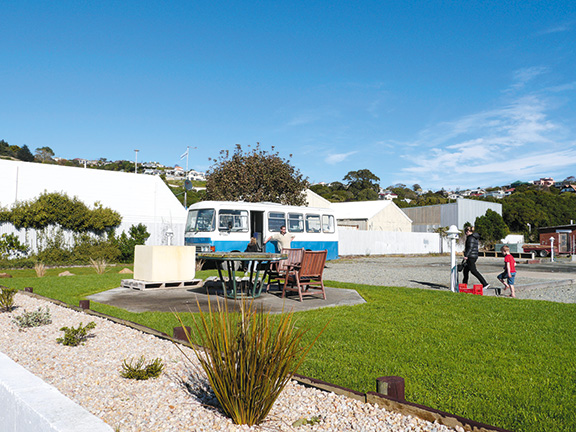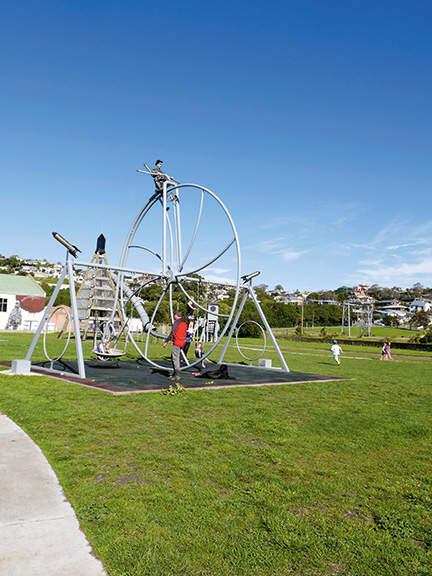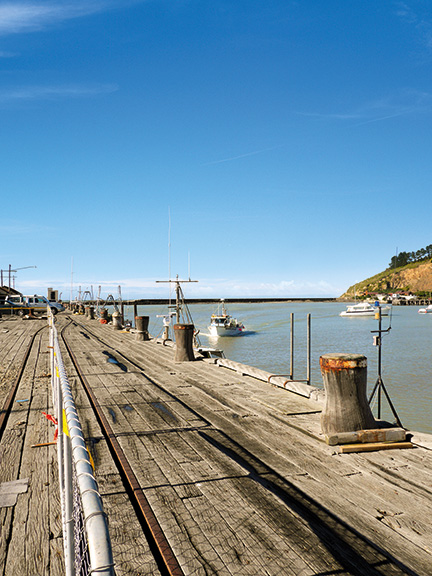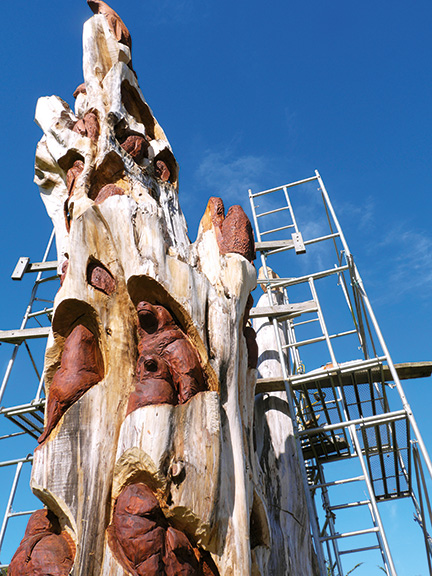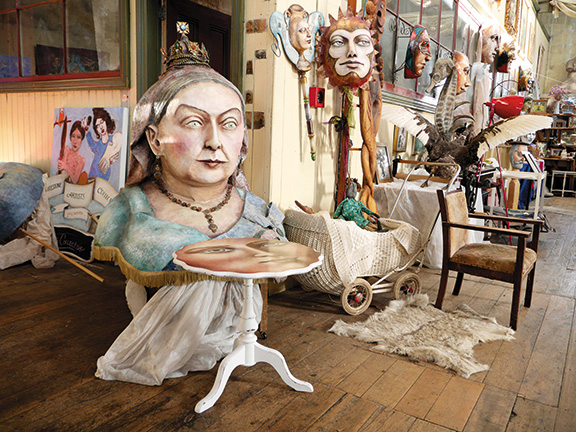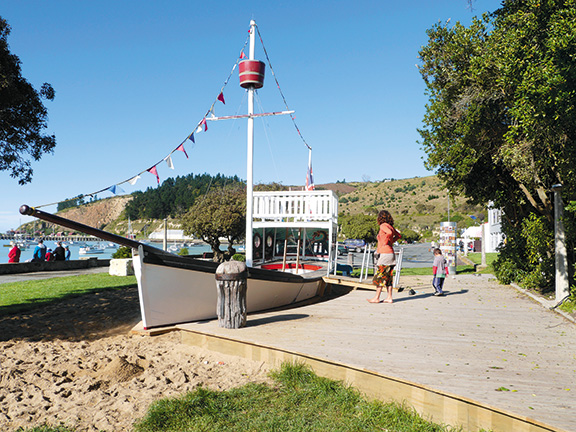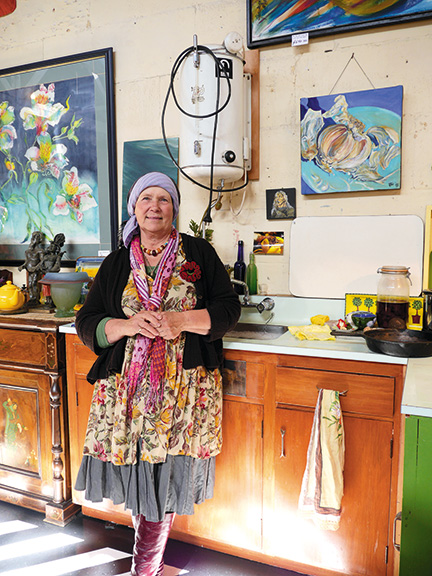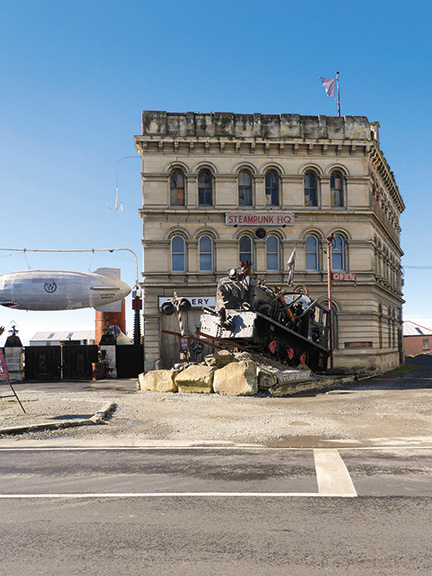Oamaru boasts the country's largest number of protected heritage buildings and the country's least modified Victorian port. Yet, when Hugh Robison built a humble cottage on his remote sheep run in 1853, there was no harbour on the exposed coast.
The deep water port, for which Oamaru was later to become known, was built on the back of trade, and the ships lost in pursuit of it. Nearby Totara Estate is where New Zealand's multi-billion-dollar frozen meat trade began in 1882, when the first shipment of frozen mutton was prepared to sail on the SS Dunedin.
But Oamaru also benefitted from the gold rush. Today this is particularly evident in two adjacent buildings – The Bank of Otago (1871) and The Bank of New South Wales (1871) – each built in the neo-classical Renaissance style from local limestone, now known as Oamaru Whitestone.
Robert Falcon Scott’s ties to the town
The history of the town equally resides in some of its more modest buildings. One in particular, the otherwise unremarkable night watchman's shed, placed Oamaru on the world map. It was here, under the cover of darkness, in February 1913 that two men rowed ashore from the Terra Nova, the support vessel for Robert Falcon Scott's Antarctic expedition.
As the ship sailed on to Lyttleton Harbour, a special edition of The Evening Post speculated the two men left behind were Captain Scott, together with one of his officers. In fact, they were Dr. Edward Atkinson and Lieutenant Harry Pennell, whose mission was to send a message that Scott and his polar party had perished.
When the families of the perished had been informed, and the official announcement eventually made, the country lapsed into mourning. Christchurch City Council later commissioned Scott's wife, Kathleen — a sculptor — to create an enduring artwork in his memory.
However, the story remains equally enshrined in Oamaru's unpretentious night-watchmen's shed where the news was broken, and stoically held in secret.
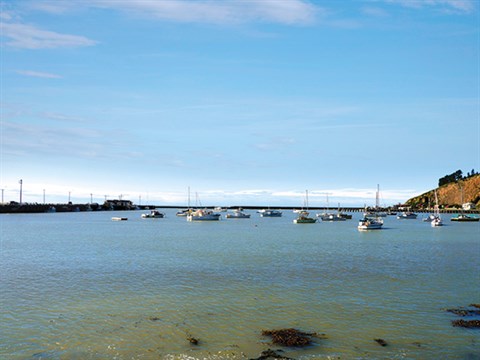
Friendly Bay
Before the first part of the breakwater was built in 1875, more than 20 boats were wrecked, and many more damaged, on the exposed beach below the town — ironically now known as Friendly Bay.
During the worst storm in 1868, four people drowned as four ships — and a new jetty — were wrecked. The town took stock, forming, in 1874, a harbour board to oversee the construction of the breakwater, the handsome Sumpter Wharf, and several smaller wharves to serve the burgeoning frozen meat and woollen goods trade.
Today, Sumpter Wharf remains, largely unmodified — a handsome tribute to all this industry, endeavour, and foresight. The Oamaru Council is justifiably proud of its heritage, and Sumpter Wharf is the latest in a series of projects undertaken to restore the foreshore and Historic Precinct.
Among these are the revitalised children's playground at Friendly Bay, the rail over-bridge, and some incredible carvings of local marine life and fauna enlivening two towering macrocarpa tree stumps. Do stop for a look at the carvings and reinvigorated waterfront next time you are in the area.
Oamaru’s Historic Precinct
The art community is alive and doing very nicely in the Historic Precinct. As is his habit, the co-pilot dived off into a doorway and scurried up a flight of stairs to take us both to the Grainstore Gallery — one of the most amazing I have ever been visited.
We also enjoyed our visit to Jackie Margaret's gallery. Jackie is a multi-media artist whose upstairs gallery is like a warm and inviting private home and art collection. I could happily have moved into this restful, eclectic space.
Where to stay in Oamaru
We stayed at Oamaru's Top 10 Holiday Park adjacent to the attractive Public Gardens — quiet, yet close to all of the action. The welcome was exceptionally warm and professional, and the facilities were great.
There is also the Harbour Tourist Park, which has powered camp sites by the Esplanade (or Marine Parade).
For the latest motorhome reviews and roadtrip destinations, subscribe to our Motorhomes, Caravans & Destinations magazine here.

